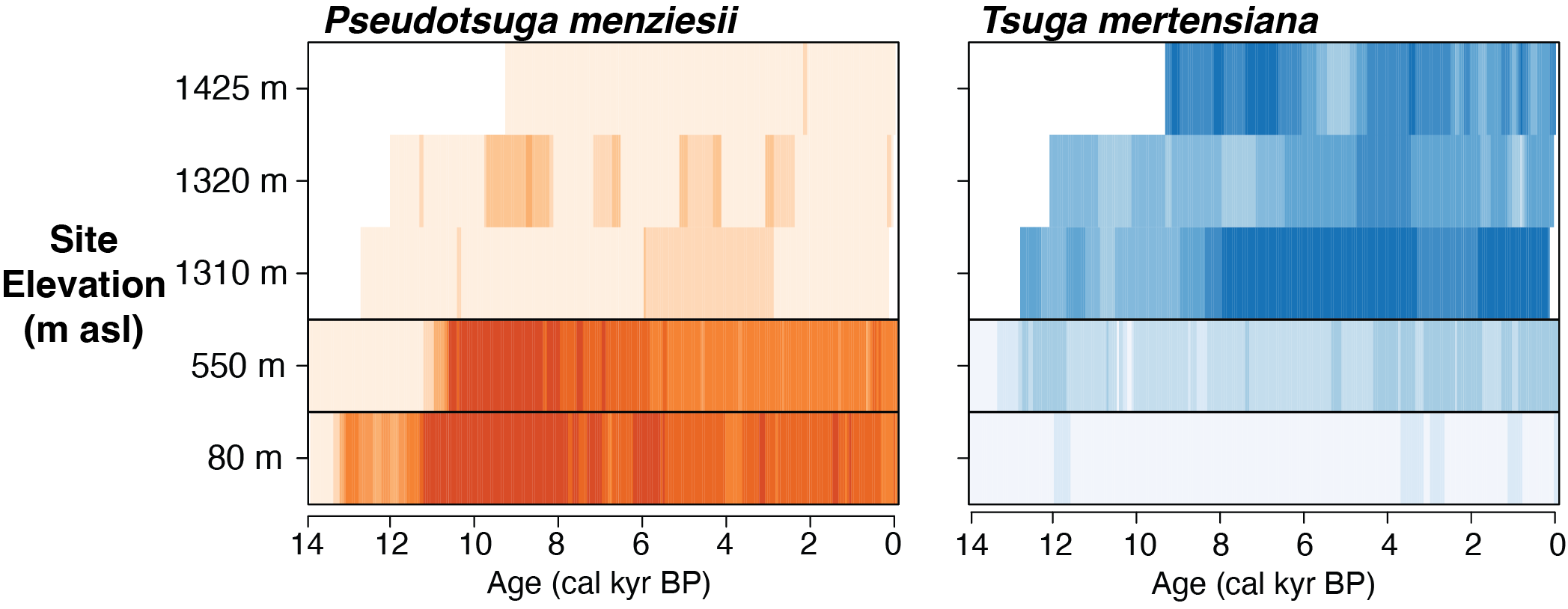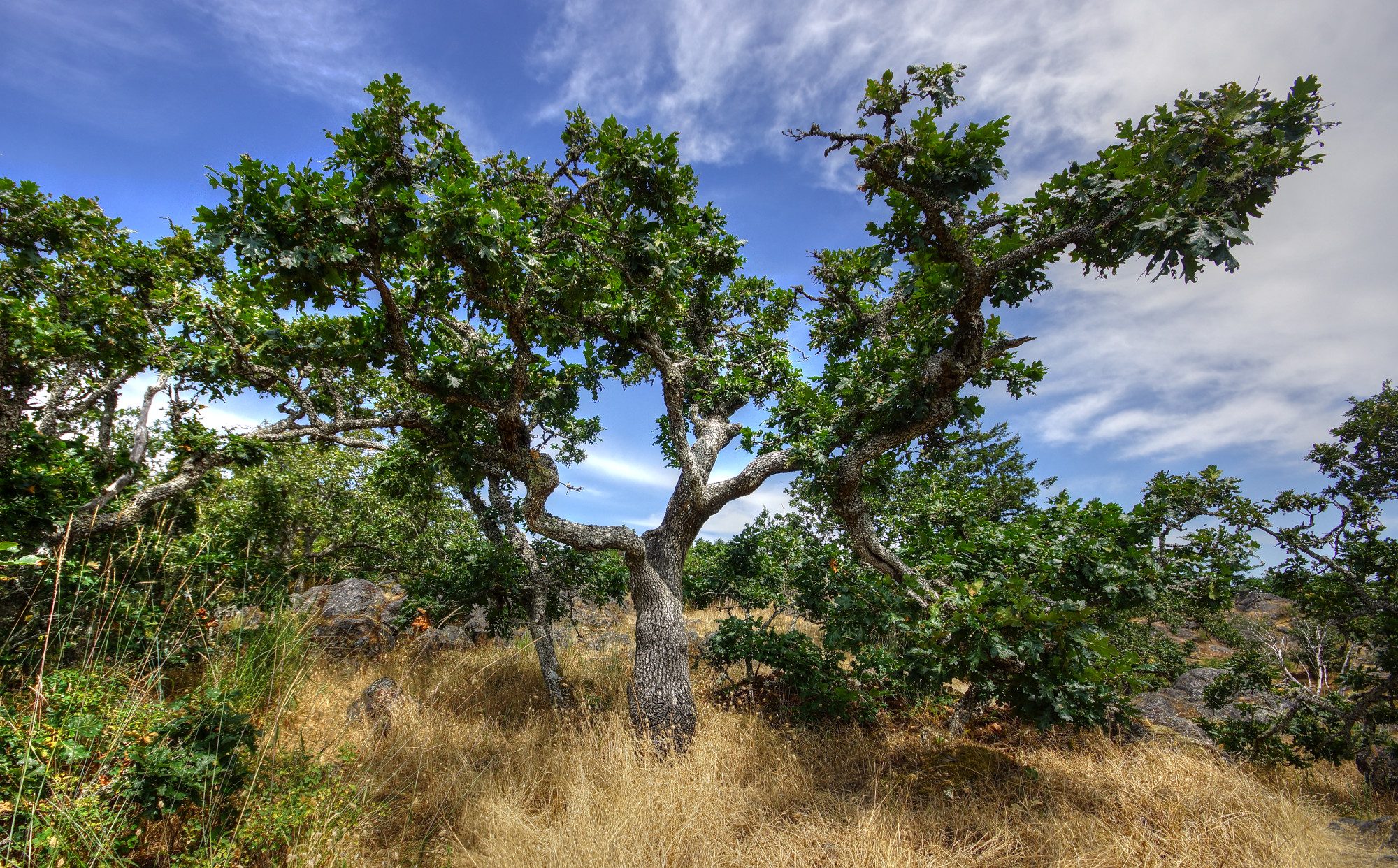Much of the research we conduct is focused on using paleoecological approaches (e.g., pollen and plant macrofossil analyses) to determine how plant communities have changed in response to climate and other factors since the last glaciation. Research on the vegetation history of the British Columbia coast, including development of modern coniferous rainforest, is the central focus. Our research in BC has documented that productive forests grew on the continental shelf during the last glaciation, when sea level was 150 m lower than present and the adjacent mainland remained glaciated. By combining fossil pollen records across multiple sites, we have shown elevational sorting of woody plants since the last glaciation. The importance of interspecific differences in species traits in directing long-term forest dynamics is also of central interest. (Presentation of this research at the 2022 PAGES Open Science Meeting)
Understanding the interacting roles of climate change and disturbance is vital for effective management of Canada’s forest resources. Climate change and disturbance events such as fire drive shifts in forest composition, structure and function as well as the ability of forests to withstand and adapt to future changes and disturbance. Research in the lab uses a multi-proxy approach to generate high-resolution paleoenvironmental records of changes in climate, forest dynamics, and wildfire frequency. This approach reveals how forests and disturbance regimes re-organize as climate changes and helps to clarify the mechanisms that connect climate and disturbance to forest dynamics and recovery.

Research funding has been provided through grants to Terri Lacourse from:






